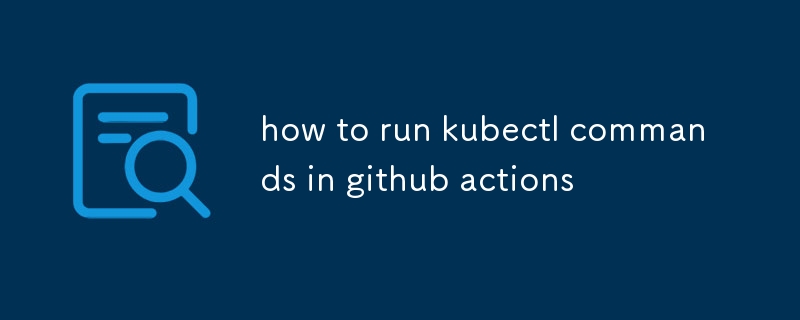This paper focuses on using kubectl to manage Kubernetes clusters in GitHub Actions. The main issue discussed is the limitations of using kubectl in GitHub Actions, such as runner access to the Kubernetes cluster, appropriate permissions, and potenti

How can I use kubectl to manage Kubernetes clusters in GitHub Actions?
To use kubectl to manage Kubernetes clusters in GitHub Actions, you can follow these steps:
- Set up a Kubernetes cluster. You can use a managed Kubernetes service like Amazon EKS, Google Kubernetes Engine, or Microsoft Azure Kubernetes Service, or you can set up your own Kubernetes cluster on-premises.
- Install kubectl on your local machine. You can download kubectl from the Kubernetes website or use a package manager like Homebrew or apt-get.
- Create a GitHub action workflow file. This file will define the steps that your GitHub action will take.
- Add a step to your workflow file that runs kubectl commands. You can use the kubectl command to create, delete, or modify Kubernetes resources.
- Commit and push your changes to GitHub.
Here is an example of a GitHub action workflow file that uses kubectl to create a deployment:
<code class="yaml">name: Deploy to Kubernetes
on:
push:
branches:
- main
jobs:
deploy:
runs-on: ubuntu-latest
steps:
- uses: actions/checkout@v2
- name: Set up kubectl
uses: azure/setup-kubectl@v1
with:
version: '1.21'
- name: Create deployment
run: kubectl apply -f deployment.yaml</code>Copy after login
What are the limitations of using kubectl in GitHub Actions?
There are a few limitations to using kubectl in GitHub Actions:
-
kubectl commands must be run on a runner that has access to the Kubernetes cluster. This means that you cannot run kubectl commands on a runner that is not in the same region as your cluster.
-
kubectl commands must be run with the appropriate permissions. This means that you must have the necessary permissions to create, delete, or modify Kubernetes resources.
-
kubectl commands may be subject to rate limits. This means that you may not be able to run kubectl commands as frequently as you would like.
How can I troubleshoot common issues when running kubectl commands in GitHub Actions?
There are a few common issues that you may encounter when running kubectl commands in GitHub Actions. Here are some tips for troubleshooting these issues:
-
Make sure that you are using the correct version of kubectl. The version of kubectl that you are using must be compatible with the version of Kubernetes that you are using.
-
Make sure that you have the necessary permissions to run kubectl commands. You must have the necessary permissions to create, delete, or modify Kubernetes resources.
-
Make sure that your runner has access to the Kubernetes cluster. The runner that you are using must be in the same region as your cluster and must have the necessary permissions to access the cluster.
-
Check the logs for errors. If you are having trouble running kubectl commands, check the logs for errors. The logs will provide you with more information about the error that you are encountering.
The above is the detailed content of how to run kubectl commands in github actions. For more information, please follow other related articles on the PHP Chinese website!






